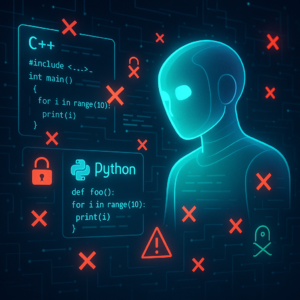Unmasking the Future of Email: How AI-Powered Spam Evades Spam Filters

Unmasking the Future of Email: How AI-Powered Spam Evades Spam Filters
Email inboxes worldwide groan under the weight of spam, which isn’t merely a nuisance but a potent cybersecurity threat consuming nearly 90% of security incidents. While we’ve armed ourselves with various anti-spam tools, the emergence of advanced language models like ChatGPT brings a new twist to the tale. These language models can easily and inexpensively craft spam emails that trick even the best Bayesian spam filters into waving them through. Intrigued? Let’s unpack this intriguing study by Malte Josten and Torben Weis to discover how well our trusty SpamAssassin stands when pitted against cunning AI-crafted email mischief.
The Rise of the Machines: A New Threat to Inbox Security
Spam and phishing attacks are old news; what isn’t is how they’re evolving. Forget the days of poorly worded, obvious spam. Today’s spammers harness the power of Large Language Models (LLMs) like GPT-3.5 Turbo to craft emails that charm and deceive. These AI models are cheap to use, making it a piece of cake for spammers to churn out realistically composed emails, capable of slipping past traditional spam defenses.
This research uncovers just how these AI-modified spam emails fare against SpamAssassin, a popular open-source spam filter renowned for its relentless community updates and transparency. Spoiler alert: Results show it’s a bit sore — with up to 73.7% of spam emails being cheerfully misjudged as legitimate.
A Peek at the Experimentation: Under the Hood of Spam Wizardry
The researchers designed a sophisticated pipeline. Picture transforming a sneaky old-school spam email into a suave message by having GPT-3.5 Turbo rewrite it. Think of it as dressing up a bookworm in trendy couture — suddenly, everyone notices!
The Tech Trickery
-
Setting Up the Experiment: Our testbed revolved around a mail server configuration leveraging SpamAssassin for final email classification as spam or “ham” (legit). Think of it as setting up a challenge for SpamAssassin to spot the moody teenager hiding in a room full of adults at a party.
-
LLM’s Role: The AI sniffed out spam-like language and rephrased it to something palatable. GPT-3.5 Turbo got its creative juices flowing, making the emails look like regular pen pal messages, without altering any sender or receiver details.
-
Spam Success Meter: They measured the rate of success by calculating how many rephrased emails were mistakenly tagged as ‘ham’ by SpamAssassin. With a success rate reaching a remarkable 73.7%, it’s clearly knows its way around these digital doors.
Why Should You Care? The Real-World Impact
The real-world implications are, frankly, as thick as your odds of winning the Powerball if you don’t buy a ticket. Businesses, security systems, and everyday users are at risk, as AI-driven techniques can roll out this sophisticated spam at a measly cost of 0.17 cents per email. With potential mass distribution, scammers could hit the jackpot, while inboxes and organizations suffer the consequences. The message is clear: as defenses upgrade, so must counter-defenses.
Key Takeaways
Here’s a summary without the techno-babble:
-
Old Threats, New Tactics: Spam isn’t going anywhere, but it’s gotten a whole lot craftier with LLMs making plain spam read like friendly emails.
-
Robust Filters Needed: The current filters need to up their game. Traditional Bayesian sensors like SpamAssassin need enhancements to tackle these new spam tricks.
-
Economical for Spammers: The cost-effectiveness and accessibility of LLMs mean anyone philosophical about mischief could launch wide-scale spam campaigns without breaking a sweat or the bank.
-
Prompt Engineering Insights: For those tinkering with making AI outputs better, understanding prompt crafting lets you minimize the fluff and maximize authenticity in content creation, with a nod to AI’s prowess in semantic recalibration.
The digital inbox faces an enigmatic AI adversary that’s not just about random clutter but a crafted intrusion requiring both awareness and innovation in countermeasures. As AI weaves more seamlessly into the fabric of spam technology, our counter defense strategies must evolve. Embrace the complexity but remember — even spam can learn new tricks!
If you are looking to improve your prompting skills and haven’t already, check out our free Advanced Prompt Engineering course.
This blog post is based on the research article “Investigating the Effectiveness of Bayesian Spam Filters in Detecting LLM-modified Spam Mails” by Authors: Malte Josten, Torben Weis. You can find the original article here.




